The concept of merging the lavishness of Baroque style with the understated elegance of minimalism presents a unique and sophisticated approach to interior decorating. This fusion creates an ambiance of subtle opulence, providing a modern twist on traditional grandeur. In this exploration of minimalist Baroque interior decorating ideas, we delve into how the intricate details and bold expressions of the Baroque era can be harmoniously blended with the clean lines and simplicity of minimalism. This distinctive combination offers a fresh perspective on luxury and elegance, ideal for those seeking to create a space that is both opulent and tastefully restrained.
Elegant Simplicity in a Minimalist Baroque Living Room
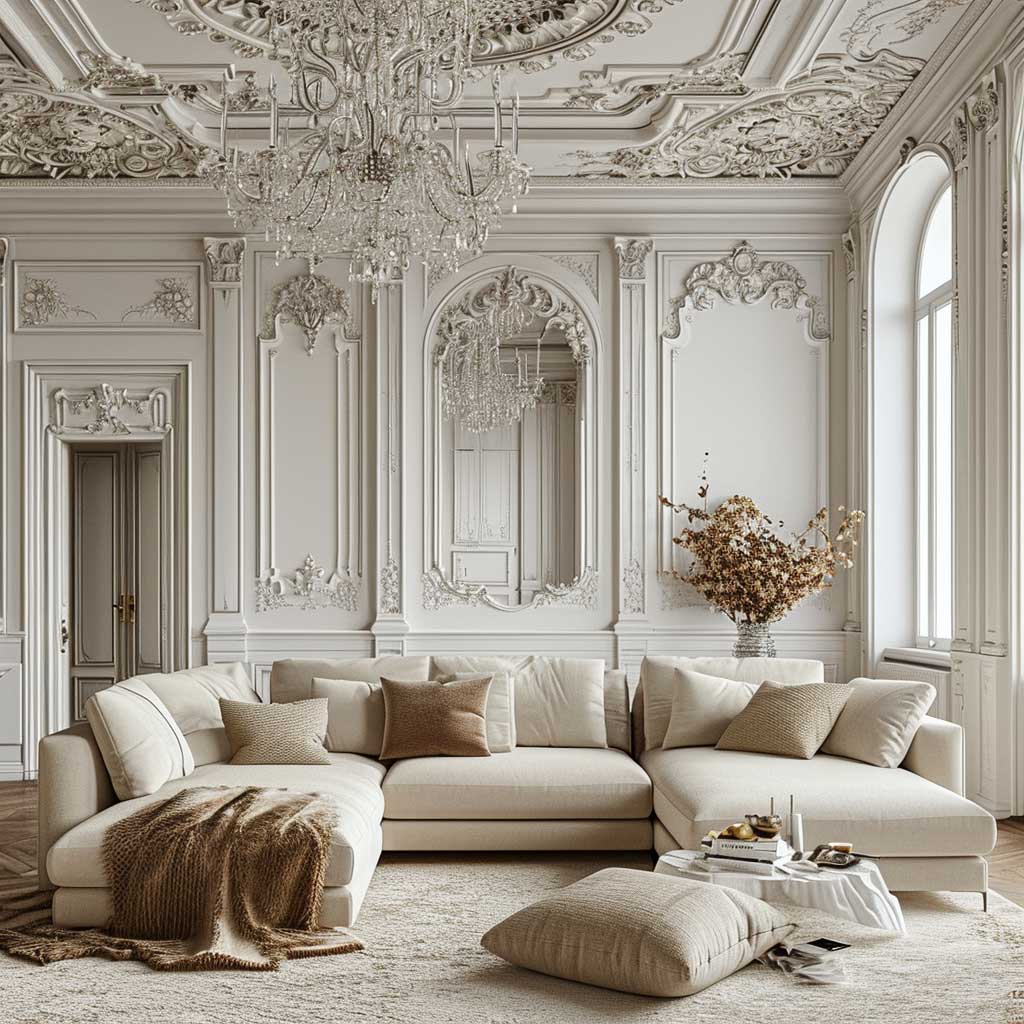

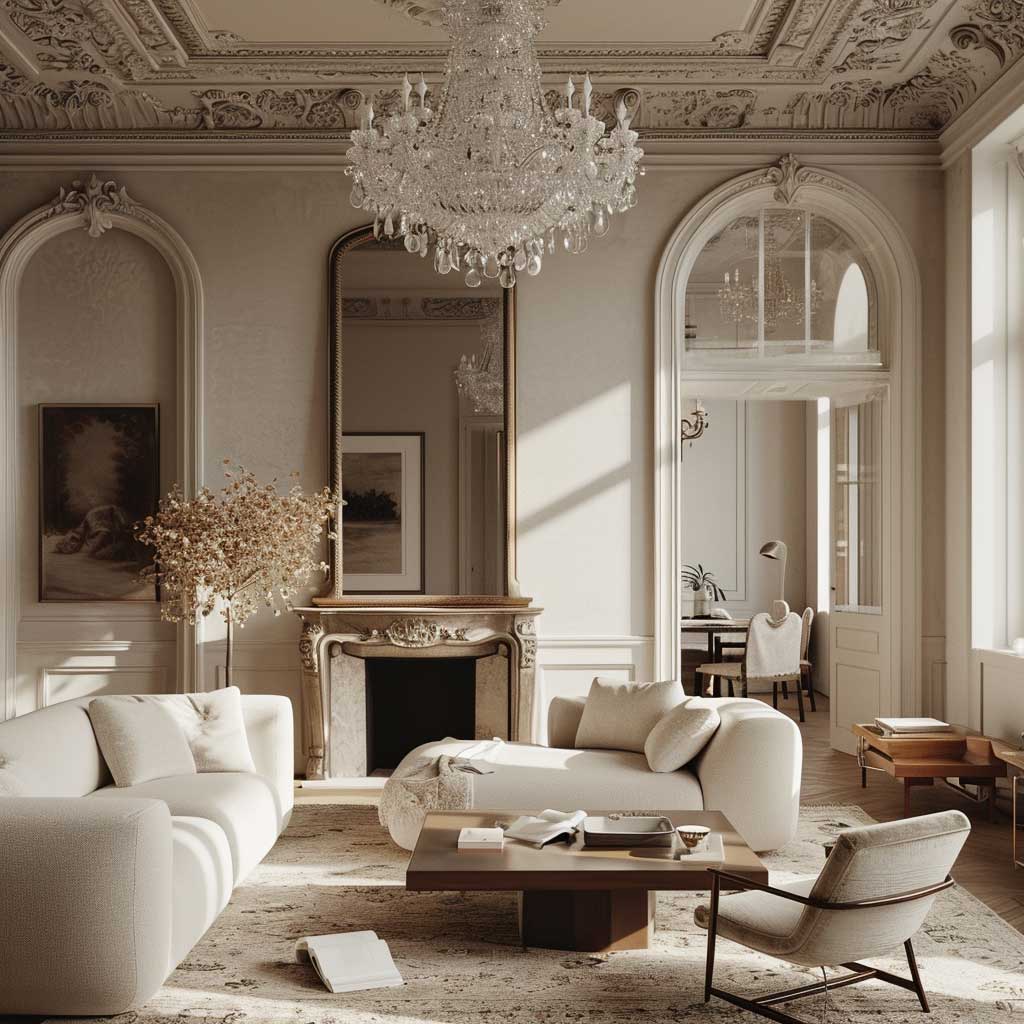
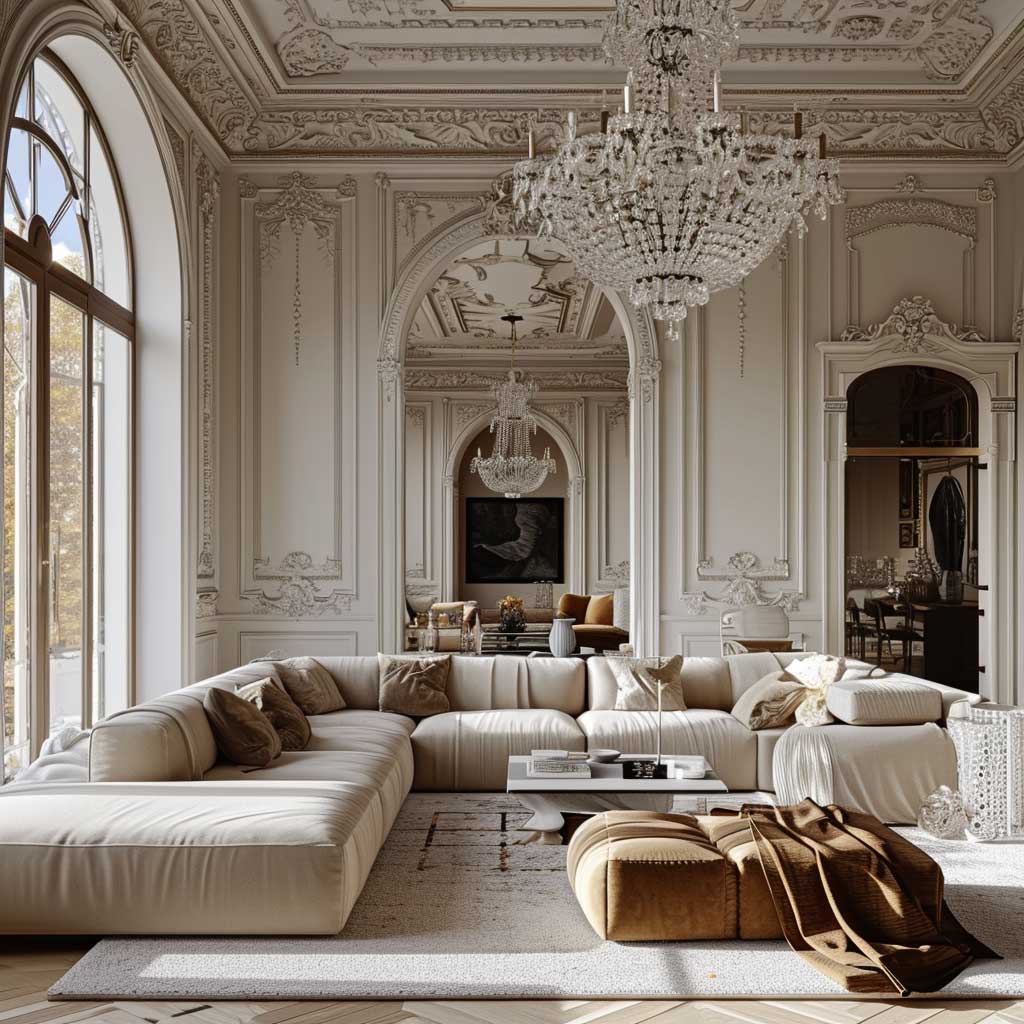
The fusion of minimalist and Baroque styles in a living room can create an atmosphere of understated elegance and sophisticated simplicity. This design approach focuses on the harmonious blend of the bold and intricate details characteristic of Baroque style with the clean lines and uncluttered spaces of minimalism. The result is a living space that is both serene and opulent, combining the best of both worlds.
In a minimalist Baroque living room, the color palette is typically restrained, with a focus on neutral shades like whites, beiges, and grays. These colors provide a calm and unobtrusive backdrop, allowing the room’s Baroque elements to stand out without overwhelming the space. The use of a neutral base also emphasizes the importance of light in the room, be it natural or artificial, creating an airy and inviting atmosphere.
Furniture in such a space is carefully selected for its form and function. Clean-lined, contemporary pieces are chosen for their simplicity, ensuring they don’t clash with the more ornate Baroque accents. For instance, a sleek, modern sofa could be paired with an elaborately framed mirror or a classic Baroque chandelier. This juxtaposition of styles brings a sense of balance and intrigue to the room.
The Baroque influence is often seen in the decorative details. Elements like ornate mirrors, elaborate light fixtures, and rich, luxurious textiles with intricate patterns are used sparingly but effectively. These pieces serve as focal points, adding a sense of grandeur and history to the room. However, the key is moderation; too many ornate pieces can overwhelm the minimalist aspect and disrupt the room’s tranquil ambiance.
Texture plays a significant role in this design style. While the overall approach is minimalist, the use of varied textures adds depth and interest to the space. Plush rugs, velvet cushions, or silk curtains can introduce a tactile dimension, enhancing the room’s sensory appeal. These textural elements also help soften the starkness often associated with minimalist spaces, making the room feel more welcoming and comfortable.

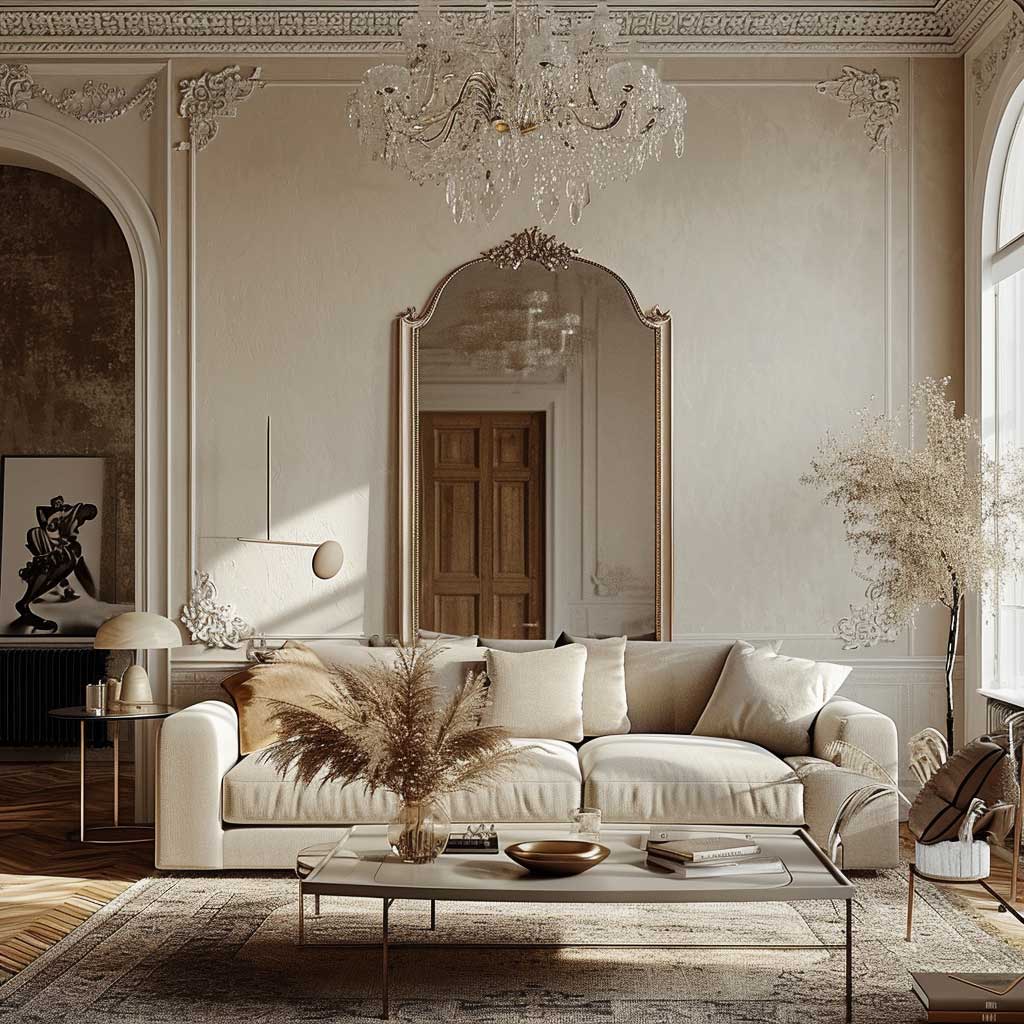
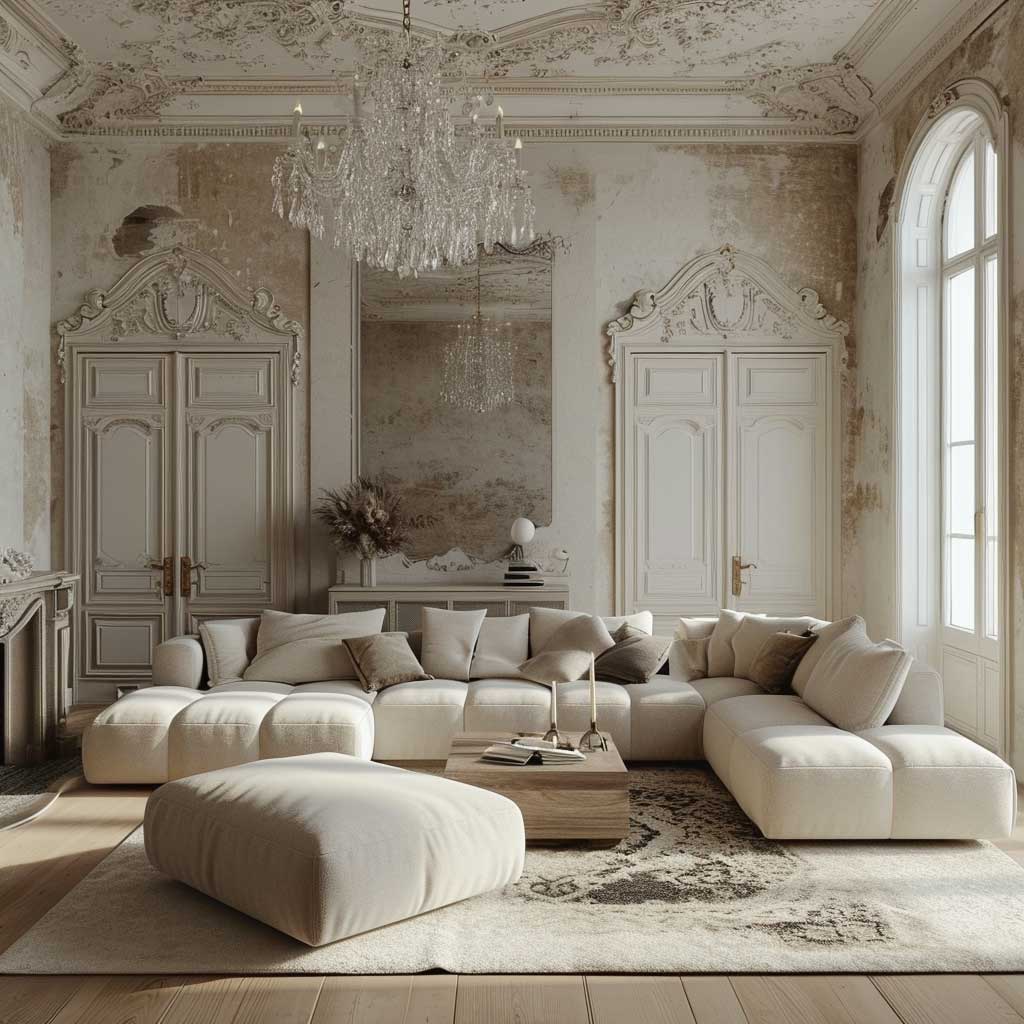
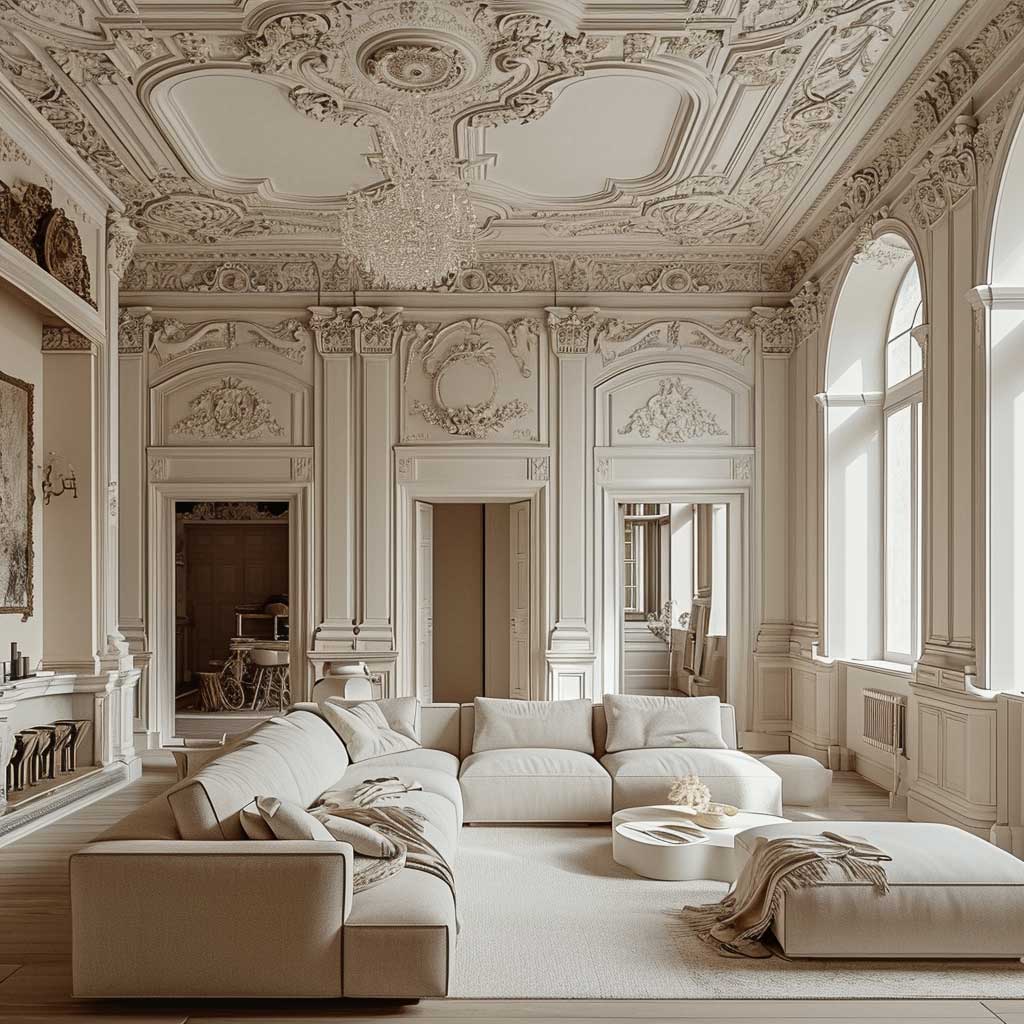
Artwork and accessories are chosen with care, ensuring they complement rather than compete with the room’s aesthetic. A large, statement piece of art can serve as a beautiful contrast against a simple wall, while smaller decorative items like vases or sculptures can add interest without clutter. The art and accessories should reflect the room’s dual influences, perhaps combining modern abstract pieces with more traditional, ornate frames.
Lighting is another area where the two styles can be beautifully integrated. A contemporary floor lamp might sit next to an armchair, while a Baroque-style chandelier hangs overhead. The lighting should be both functional and decorative, enhancing the room’s overall mood and ambiance.
This design approach is not just about the visual impact; it’s about creating a space that feels harmonious and balanced. The minimalist Baroque living room is a place of tranquility and refinement, where every element has been carefully considered to create a cohesive and inviting environment.
By embracing the principles of both minimalist and Baroque design, it’s possible to create a living room that is both timelessly elegant and refreshingly modern. This style offers a unique way to enjoy the grandeur and opulence of Baroque design in a contemporary and comfortable setting.
Modern Bedroom with a Touch of Baroque Grandeur
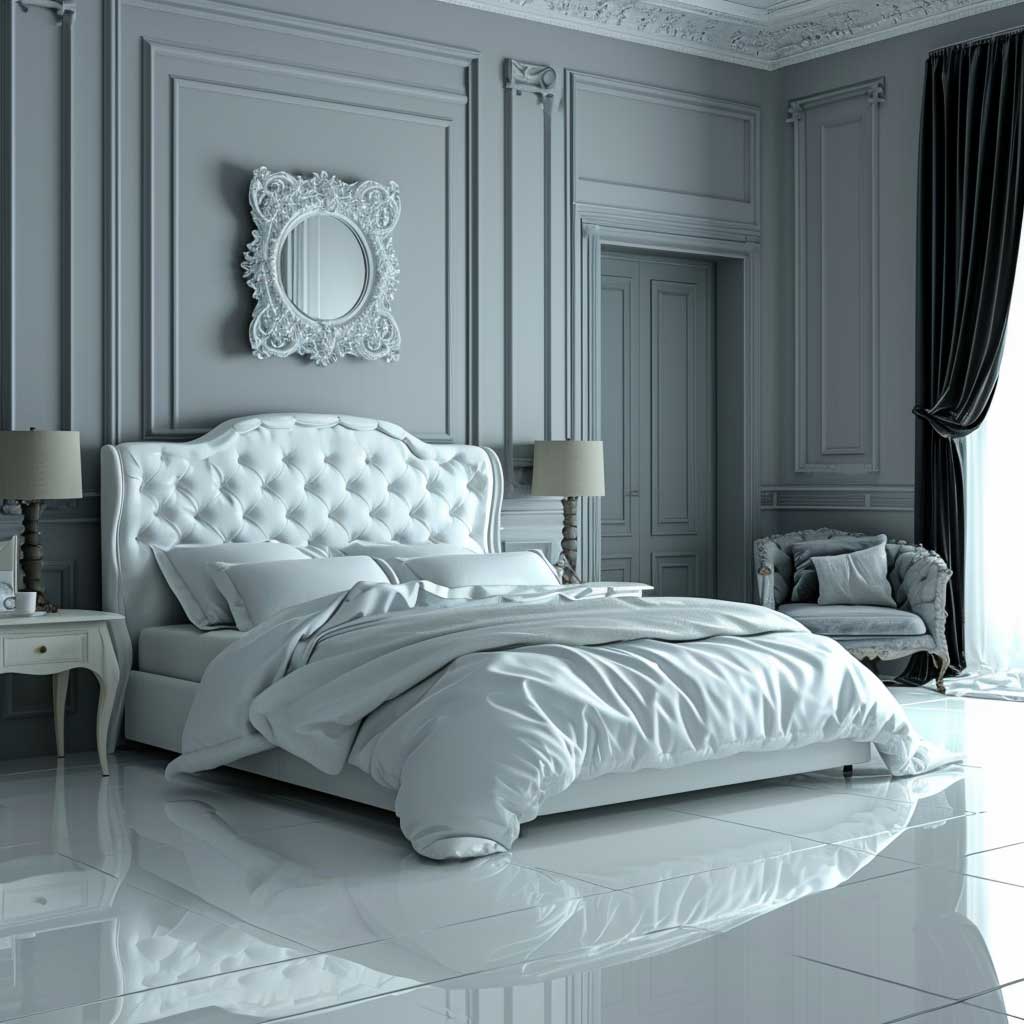
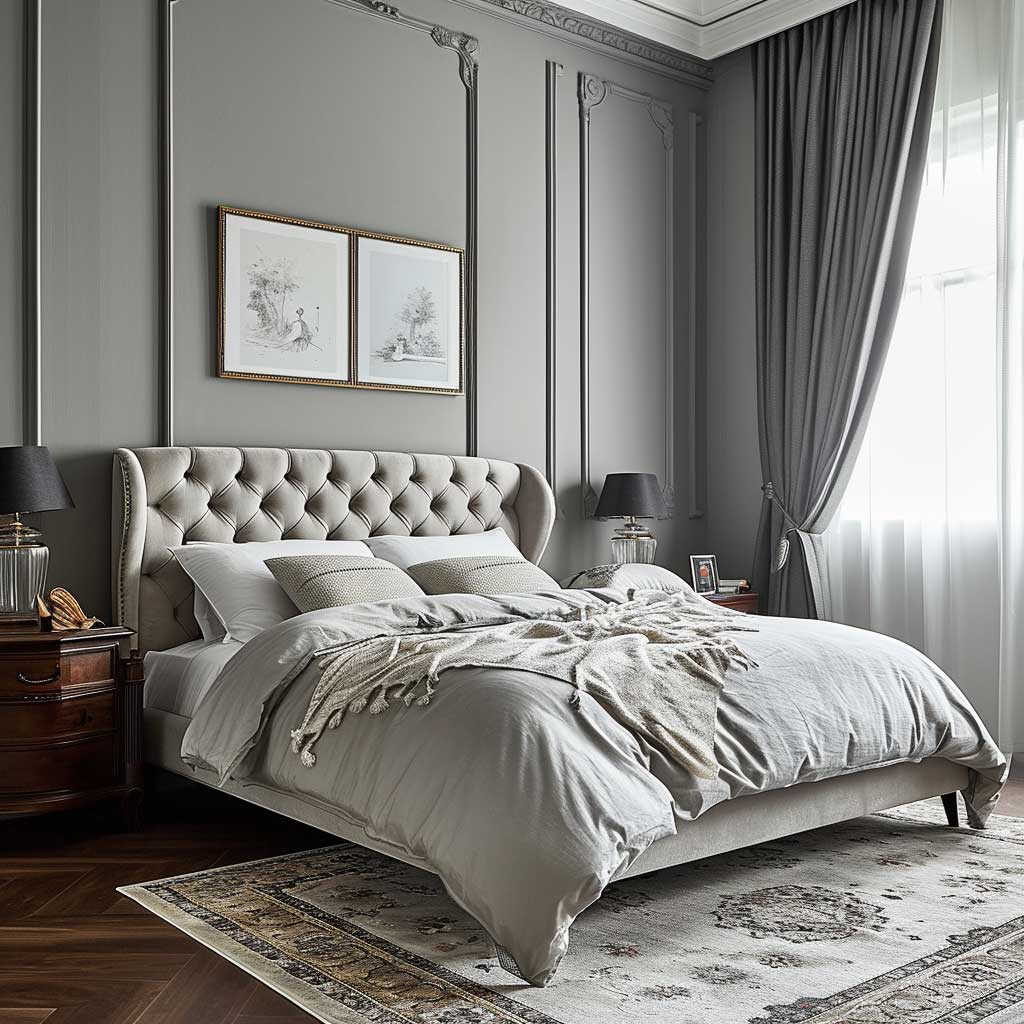
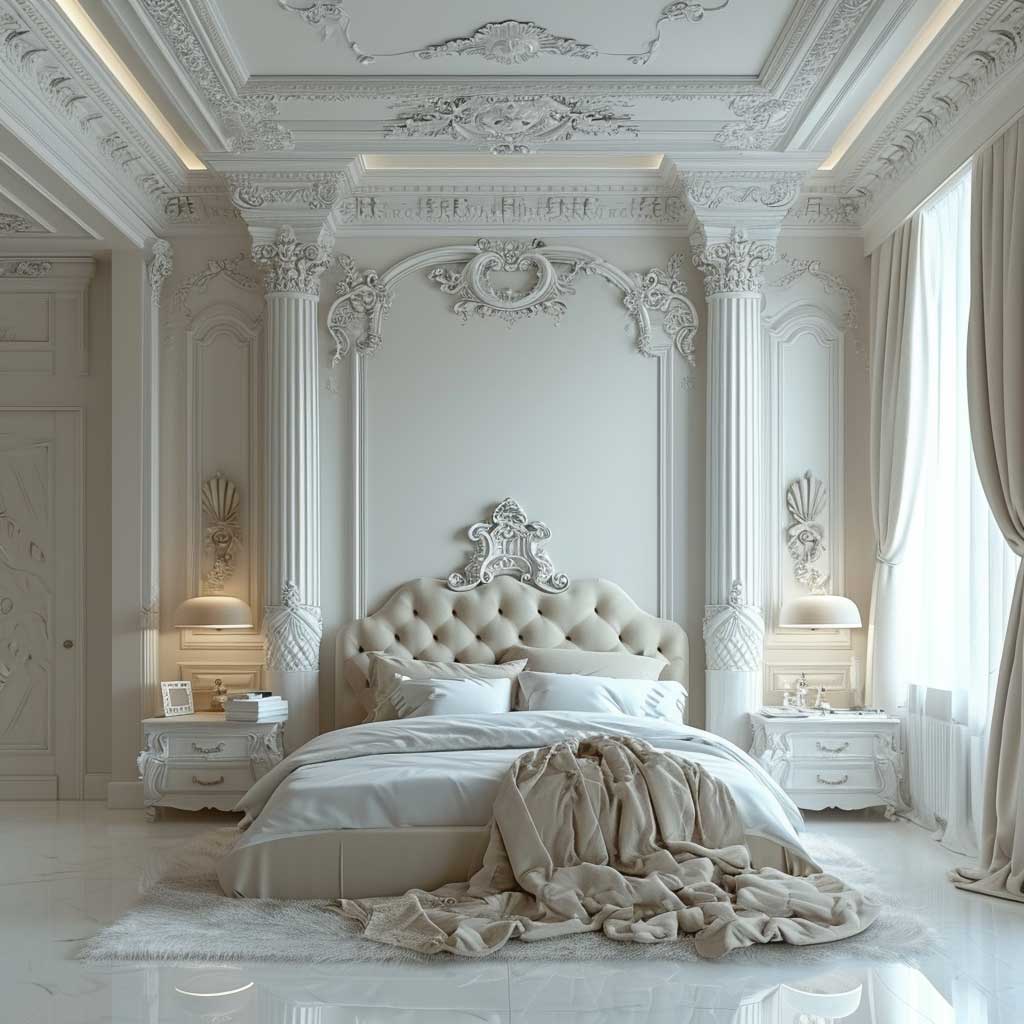

Creating a bedroom that blends the sleekness of modern design with the ornate beauty of Baroque is an exercise in striking the right balance. This approach to interior design focuses on merging the minimalist ethos of contemporary styles with the lavishness and intricacy of Baroque elements, resulting in a space that is both tranquil and luxurious.
The color scheme in a bedroom with a minimalist Baroque influence tends to lean towards softer, muted tones. These hues create a restful and serene atmosphere, essential for a bedroom. The colors are often complemented by rich, opulent accents like gold, silver, or jewel tones, used sparingly to add a touch of Baroque glamour without overwhelming the space.
In terms of furniture, the focus is on clean, simple lines typical of modern design. A minimalist bed frame, sleek side tables, and a straightforward dresser or wardrobe form the foundation of the room’s furnishings. These pieces are then accented with Baroque elements, such as an ornate headboard, a vintage mirror, or a luxurious chaise lounge. The idea is to create a sense of luxury and opulence that is both visually appealing and functional.
Decorative accents play a crucial role in this design concept. Textiles are particularly important, with luxurious fabrics like velvet, silk, or brocade used in bedding, curtains, or throw pillows. These materials add a sense of richness and depth to the room, embodying the Baroque’s love for lavish and tactile materials.
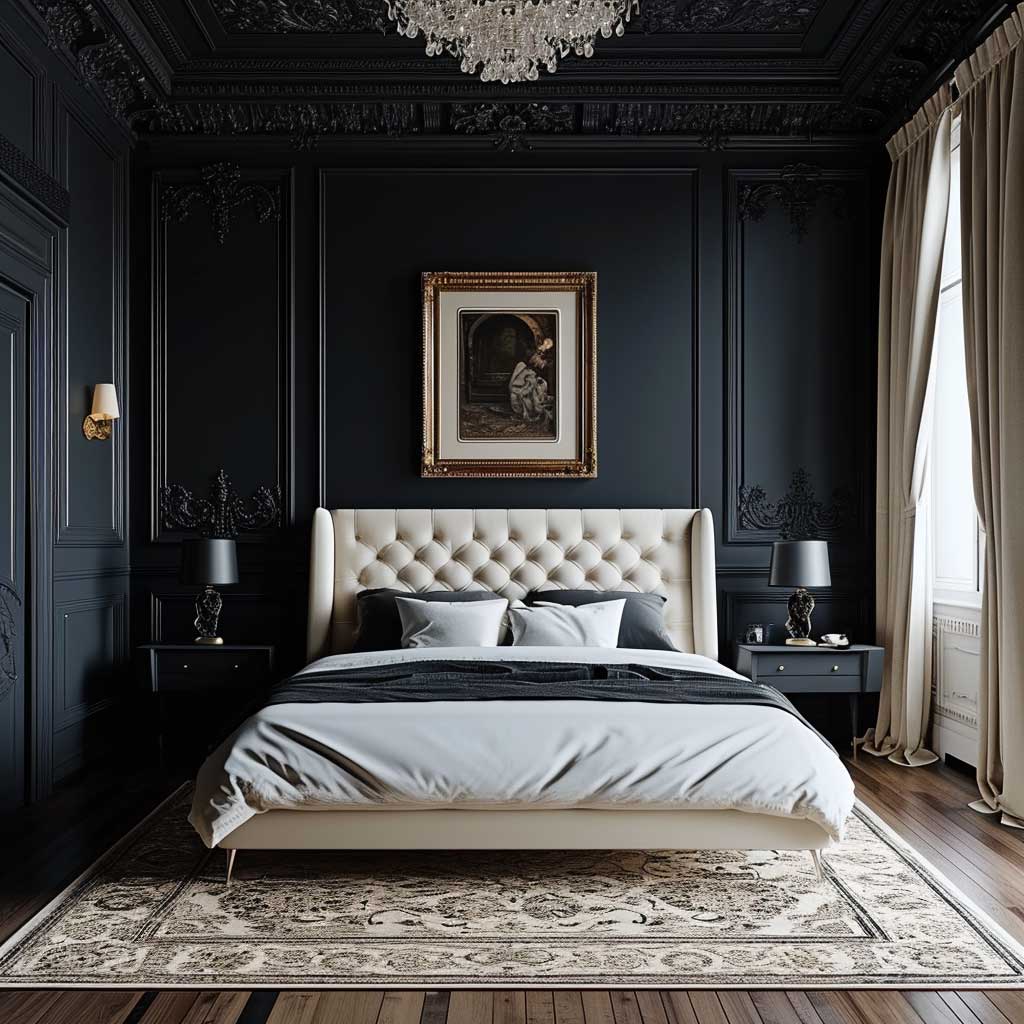

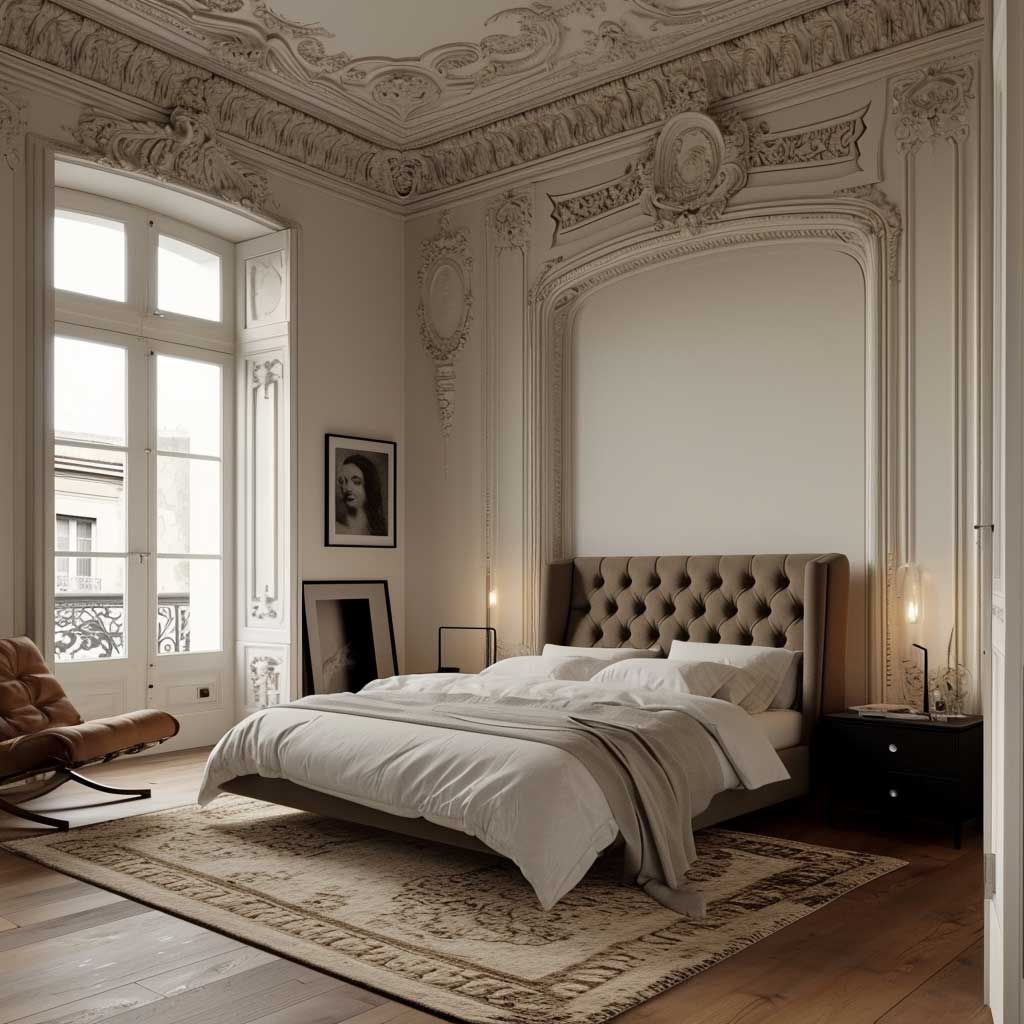
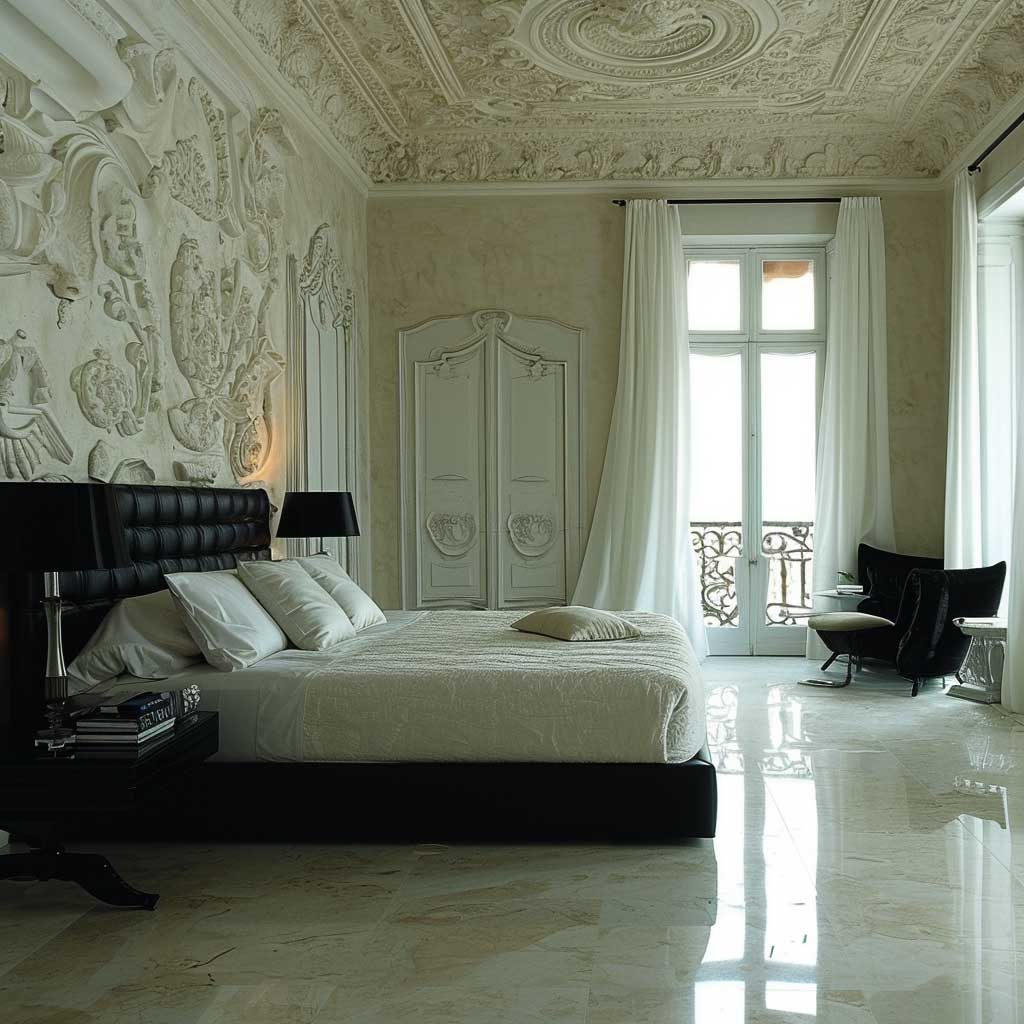
Lighting is another critical aspect. A modern bedroom with a Baroque touch might feature a statement chandelier or ornate wall sconces that provide not just illumination but also serve as decorative pieces. The lighting should create a warm and inviting ambiance, complementing the room’s overall aesthetic.
Artwork and accessories in such a bedroom are carefully curated to maintain the balance between modern and Baroque. Contemporary art pieces can coexist with more traditional elements, such as a Baroque-inspired vase or a decorative ornament. The key is to ensure that these pieces harmonize with the room’s overall theme, adding to the sense of elegance and refinement.
The modern bedroom with a touch of Baroque grandeur is all about creating a personal sanctuary that feels both luxurious and comfortable. It’s a space where the day’s stresses can be left at the door, and one can relax in an environment that is both stylish and soothing.
This approach to bedroom design offers a unique opportunity to blend the best of both worlds – the clean, uncluttered feel of modern design with the opulence and drama of the Baroque. The result is a bedroom that is not just a place to sleep but a personal retreat that reflects a sophisticated and luxurious lifestyle.
Sleek Kitchen Design Infused with Baroque Elements

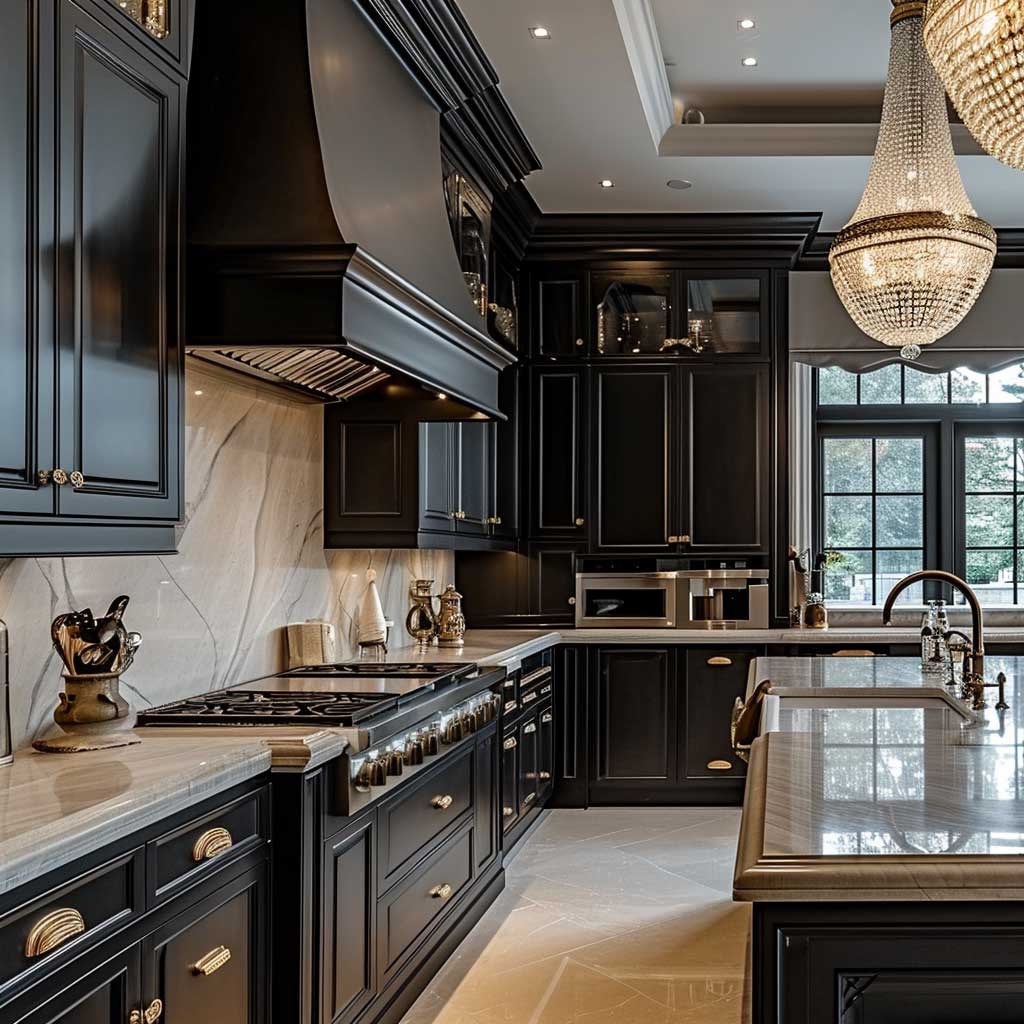

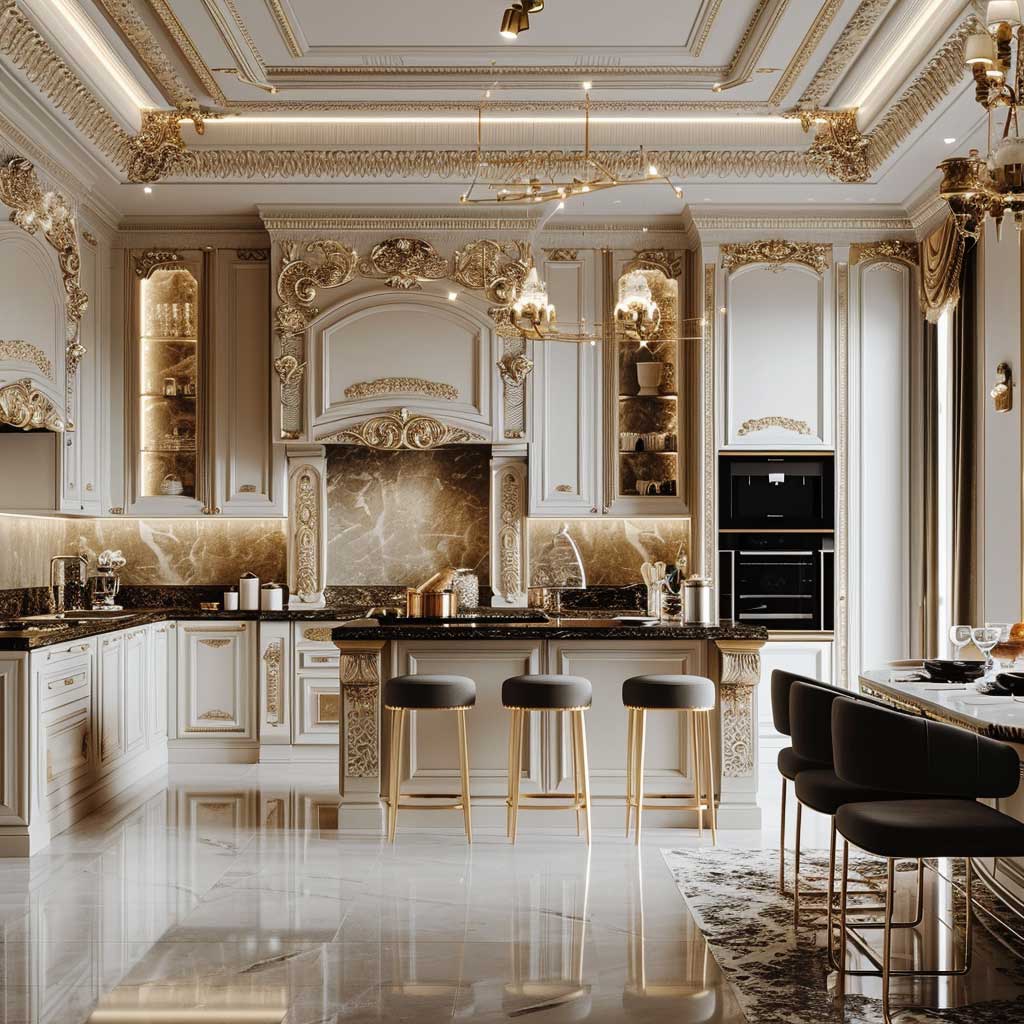
The kitchen, often referred to as the heart of the home, is an ideal space to showcase a blend of minimalist and Baroque design elements. This unique combination allows for a functional and sleek kitchen space that is imbued with the grandeur and ornate details characteristic of Baroque style. The result is a kitchen that is both stunningly beautiful and highly functional, offering a fresh take on classic design.
In such a kitchen, the color palette tends to be neutral and subdued, creating a clean and uncluttered backdrop. This simplicity is then accented with richer, more opulent hues or metallic finishes that bring a touch of Baroque luxury. For example, a kitchen with white or gray cabinetry can be enhanced with gold or brass hardware, adding a sense of elegance and sophistication.
The cabinetry and countertops in this design approach are sleek and modern, with clean lines and minimalist finishes. These elements provide a contemporary feel to the kitchen, ensuring that the space remains functional and easy to navigate. The Baroque influence can then be introduced through decorative details such as intricately designed backsplash tiles, ornate light fixtures, or luxurious bar stools.
In terms of appliances and functionality, the kitchen remains modern, with state-of-the-art equipment and efficient storage solutions. However, these modern amenities can be complemented with decorative elements that reflect the Baroque style, such as an elegant faucet or a vintage-inspired range hood. The goal is to balance functionality with aesthetic appeal, creating a kitchen that is both a joy to cook in and a feast for the eyes.

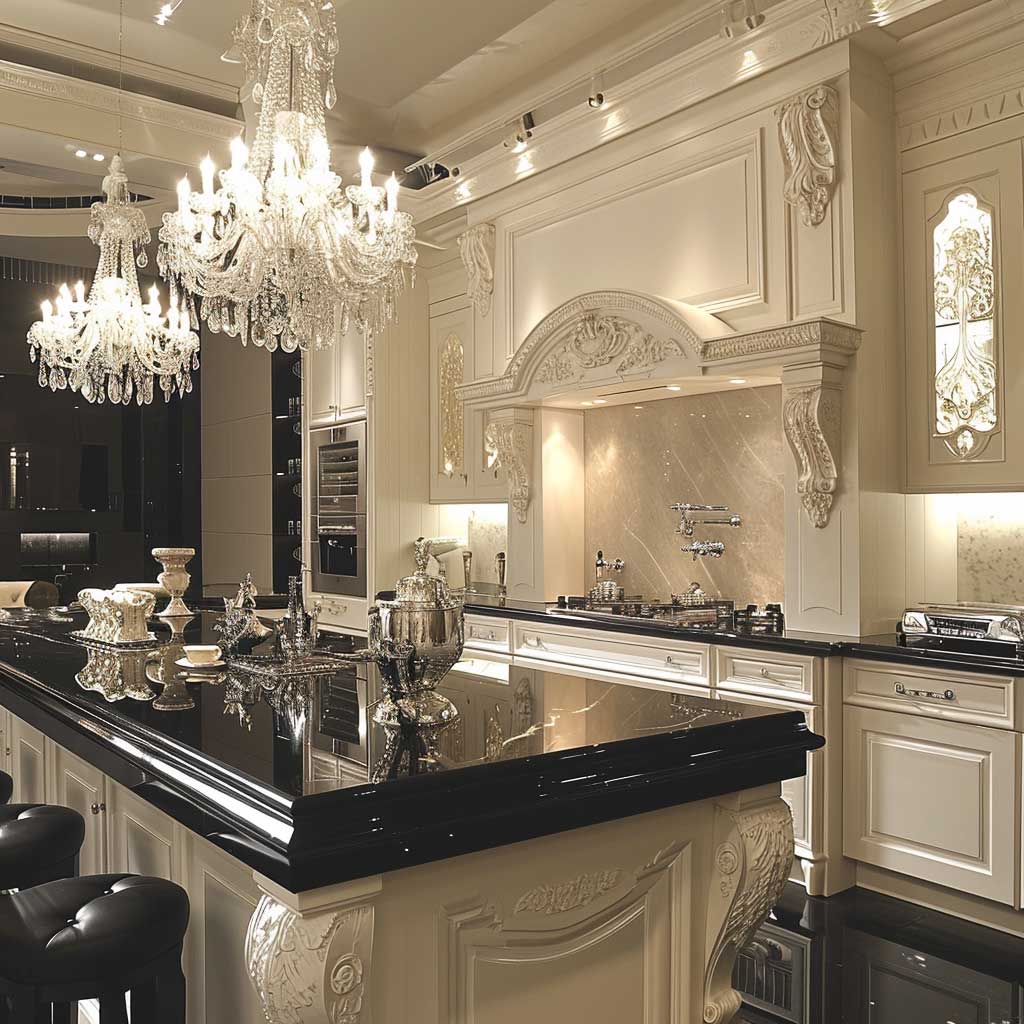

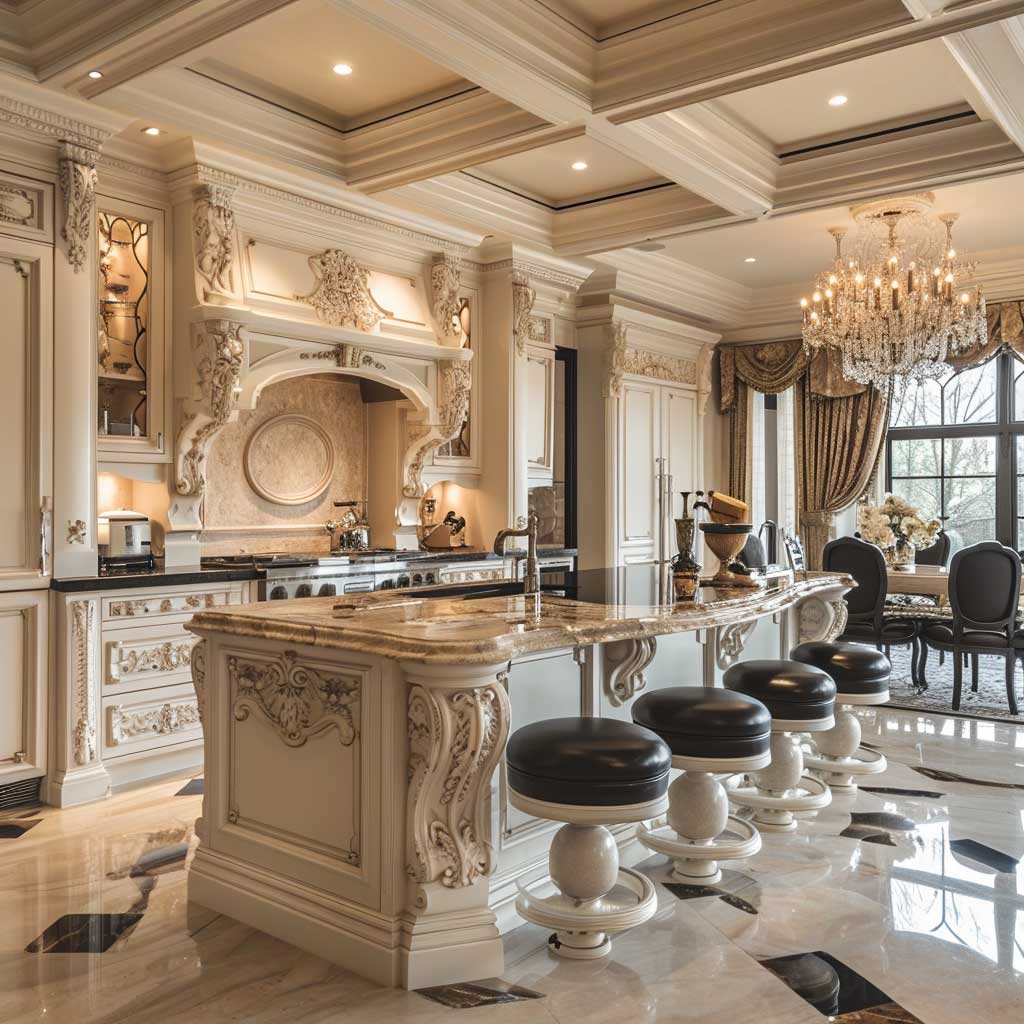
Textural contrasts are important in such a kitchen design. Smooth, modern surfaces can be juxtaposed with more ornate textures. For example, a sleek marble countertop can be paired with a carved wooden panel or a decorative tile pattern. These textural differences add depth and interest to the space, making the kitchen feel dynamic and inviting.
Lighting is a critical component, with a focus on creating a warm and welcoming atmosphere. Modern recessed lighting can provide the necessary task lighting, while more decorative Baroque-style chandeliers or pendant lights can serve as a focal point, adding a sense of drama and luxury to the kitchen.
Decorative accessories should be chosen with care, ensuring they enhance the room’s overall theme without cluttering the space. Items such as ornate bowls, decorative jars, or a statement clock can add personality to the kitchen, reflecting the Baroque’s love for detailed and opulent designs.
A kitchen that combines minimalist and Baroque elements offers a unique and exciting design opportunity. It’s a space where the functionality and simplicity of modern design meet the lavishness and detail of Baroque style, resulting in a kitchen that is both practical and aesthetically captivating.
This approach to kitchen design is about more than just combining two different styles; it’s about creating a space that reflects a love for both modern efficiency and historical elegance. The minimalist Baroque kitchen is a testament to the idea that the heart of the home can also be a work of art, offering a unique and luxurious culinary experience.
The art of blending minimalist and Baroque styles lies in the delicate balance of simplicity and extravagance. This unique interior decorating approach allows for the creation of spaces that are both luxuriously opulent and comfortably minimal. By incorporating key Baroque elements into a minimalist framework, one can achieve a look that is both timelessly elegant and refreshingly modern. These decorating ideas serve as inspiration for those who appreciate the grandeur of the past but seek to interpret it through a contemporary lens. The result is a living space that exudes sophistication, tranquility, and a hint of historical charm.












